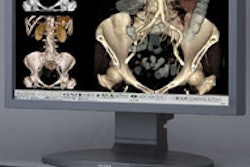ORLANDO, FL - Careful planning and anticipation can soften the impact of switching to a new PACS vendor, according to Alan Schweitzer, chief technical officer of Radiology Consulting Group (RCG) HealthCare Consulting. Schweitzer spoke during a Friday session at the annual meeting of the Society for Computer Applications in Radiology (SCAR).
There are many factors that would cause an institution to consider a divorce from its current PACS vendor, including concerns about system architecture, functionality, integration, stability, and reliability, Schweitzer said. Other issues include service and support, vendor responsiveness, and vendor viability and commitment to PACS.
Since it's costly and disruptive to switch PACS networks, it's generally a good idea to make sure every possible avenue is explored with the current vendor before a final determination is made, he said.
Once the decision is made to cut the cord, however, facilities need to be aware of important technical and operational issues, including the potential for reusability of hardware, availability of prior images, and an implementation transition plan.
"Migration is, in some ways, more difficult than the introduction of new PACS," Schweitzer said.
In most cases, the hardware will not be reusable by the new vendor, and even if it is, the hardware is likely more than two years old; it's probably prudent to upgrade the hardware, he said.
As for availability of prior images, sites have the choice of dumping prior images, preserving the legacy PACS core, preserving the legacy image archive only, or migrating images to the new archive.
Migration to a new PACS requires ongoing access to legacy data, including image data (on the archive) and the database (patient and exam data). Unfortunately, image data may be stored in a proprietary fashion, using a proprietary data format, image data compression, or a proprietary file system, Schweitzer said.
"DICOM Part 10 defines standards for storing image data on media, but many vendors don't strictly adhere to the DICOM Part 10 format," he said.
The database may also include information not found on the archive, such as corrections made after image acquisition, as well as annotations such as left/right markers, Schweitzer said. It's also important to validate migrated data with data from the HIS/RIS.
Preserving the legacy PACS core (including the image archive and PACS database) is probably the easiest way to maintain availability to prior images, performing a DICOM query/retrieve when access is desired, he said. This approach offers the benefit of a relatively smooth transition, with the drawback of continued dependency on the legacy PACS vendor to maintain the core.
Probably the most often used approach is to perform a DICOM data migration. Users can utilize a DICOM migration tool that queries/retrieves the legacy image PACS data and moves them to the new PACS, according to Schweitzer.
Toolkits and/or services are available from a few companies, and this model requires minimal involvement from PACS vendors. The data is migrated cleanly with database updates included, he said.
This model is slow, however, transferring approximately 7,000 to 9,000 exams per day from online cache to online cache. This could take months or years, and can interfere with normal operations.
"You can mitigate some of that by upgrading hardware or adding horsepower to support the migration, but you're buying more from your existing PACS vendor that you're trying to get rid of," Schweitzer said.
Another option is to preserve the legacy PACS archive, while migrating the database for retaining pointers to images on the legacy image archive.
While this approach forestalls the need for a long image data migration phase, it does require a custom database migration tool. In addition, the new PACS vendor must be able to read legacy PACS files and maintain pointers to those files, Schweitzer said. And it requires cooperation between the legacy and new PACS vendors.
Image file conversion is an option that offers some speed advantages, condensing the migration process to weeks rather than months. File copying can also potentially be done offline, he said.
However, this requires cooperation from both the legacy and new PACS vendor, or a third party who has database, file system, and file format specifications, Schweitzer said. And it requires custom database and file conversion.
To optimize flexibility, Schweitzer suggests purchasers buy from a PACS vendor that offers a software-only package, and that they seek to have images archived in DICOM Part 10 format. An all-RAID storage system would also minimize migration time, he said.
Also, buy a hierarchical storage management (HSM) system directly from a storage vendor, as HSM configurations include support for data migration, Schweitzer said.
By Erik L. Ridley
AuntMinnie.com staff writer
June 4, 2005
Related Reading
Planning mitigates PACS data migration, March 21, 2005
PACS improves care, builds interhospital relationships, March 14, 2005
PACS administrator role requires planning, vigilance, March 11, 2005
Web-based workflow and reporting systems keep imaging on track, March 10, 2005
Preparation eases PACS' impact on technologists, March 1, 2005
Copyright © 2005 AuntMinnie.com




















